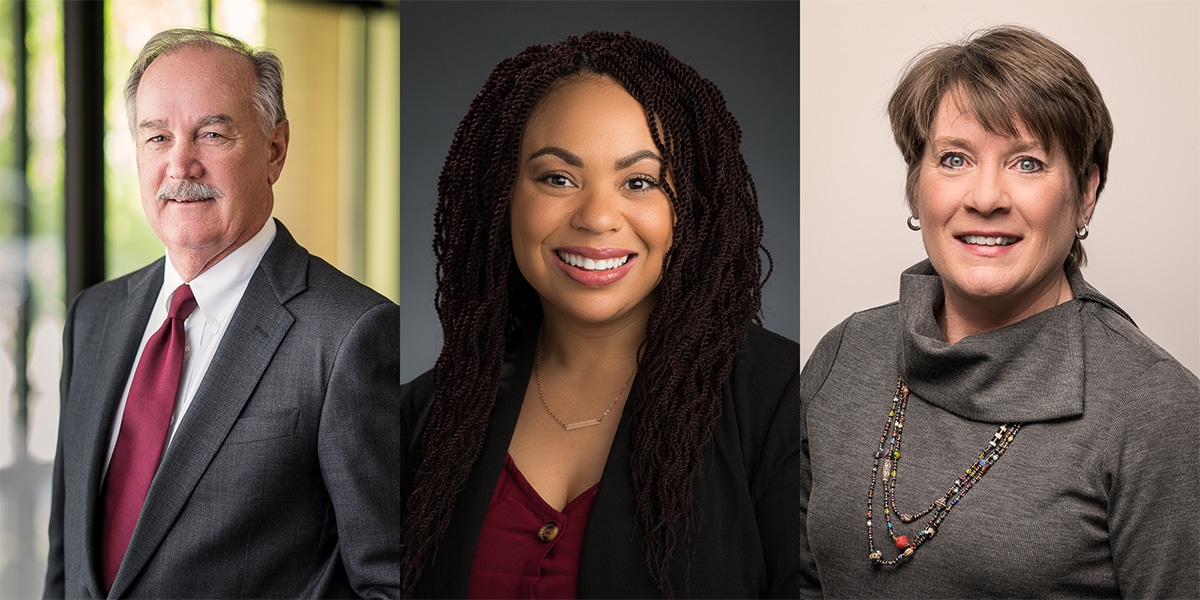How to Dress for a Portrait
Keep it simple for a great looking headshot.
It’s the most common question we hear: What should I wear for my photo shoot? The short answer is this: keep it simple and dress conservatively, as you might for a job interview.

MAKEUP
Stay with what works. Whatever your daily preferences in eyeshadow, lipstick and concealer, don’t change it up just for the portrait. A little makeup is very helpful, though, particularly for its ability to smooth skin tones and minimize shine.
GROOMING
For short hairstyles in particular, don’t get your haircut the day before your portrait. Instead, try to schedule it a week in advance to avoid the freshly scalped look. Those who have a five o’clock shadow by lunchtime should consider scheduling portraits in the morning hours or bring a razor to shave prior to the session. For long or curly hair, minimize flyaways as much as possible and pray that it doesn’t rain.
JEWELRY
Like so many things in life, less is more. That doesn’t mean no jewelry, but rather accessorizing with an eye toward subtlety. Anything overly large or eye-catching is less than ideal, as we want the focus to be on your smiling face. Avoid statement jewelry unless it’s part of your personal brand.
GLASSES
Here’s the truth: glasses do make you look a little older. But they also make you look a little smarter! The key, however, is to be sure to wear your glasses if you won’t be recognized without them. Otherwise, it’s entirely personal preference.
NECKTIE
So many of these guidelines are about minimizing distractions and flattering the subject. With neckties, anything eye-catching is not ideal. Look at what political candidates wear during debates: simple red and blue power ties are hard to beat. I always like a simple, striped tie, but this is one area you can let your personality show. Just try to avoid anything obnoxious—again, unless that’s part of your personal brand. The other tie to avoid is the bow tie. It’s simply too distracting to work well unless (and only unless!) you’re known as the bow tie guy. When in doubt, bring a couple of options to your session and we’ll help you decide on the most flattering choice. (And if you’re not great at knots, look here for some helpful hints.) If you’re in a more casual or creative industry, consider wearing a jacket but skipping the tie. No matter your profession, though, a jacket will make you look more professional every time.
JACKET
Remember that time the President wore a tan suit and everyone lost their mind? Same thing goes for portraits. If you heed no other part of this advice, do this one simple thing: Wear a well-fitting, dark toned jacket with minimal pattern. The darker the jacket, the more professional the look—though that doesn’t mean black is best. We suggest navy blue as the king of the hill, followed by dark gray, charcoal, black and potentially brown for men, and all the jewel tones are in play for the women. A fine pattern is acceptable, but avoid crossing over into zoot suit territory. Skip the searsucker, even in the heat of summer. And men, here’s the rule on jacket buttons: never button the bottom one. If there are two, button only the top. If there are three, you first button the middle button, have the option then to button the top button, and again never button the bottom one. And most of all, give priority to a jacket that fits well.
SHIRT
If it’s going under a jacket, it can be almost any color you like—as long as it’s white, off-white or light blue. Do think about minimizing the pattern. Without a jacket—by the way, you really should reconsider and wear a jacket—white looks very stark. If you’re considering a sleeveless blouse, reconsider that as well. Based on how most portraits are cropped, bare shoulders are rarely flattering even on the most fit subjects. Under a jacket, though, anything goes.
TURTLENECK COLLARS
No thank you.
FIVE TIPS TO DRESS FOR A SLIMMING EFFECT:
1. Wear a dark color
2. Wear a solid color
3. Wear a suit rather than separates (a solid color head to toe)
4. If your shirt, sweater or jacket has lines, they’d better be vertical
5. Make sure your clothes fit well, neither too baggy or too tight
LAST BUT NOT LEAST
Do your best to arrive with a positive mental attitude. If you expect to hate your portrait you surely will. We’ll do our best to put you at ease and help you look relaxed, comfortable and confident even if you’re not.
Lastly, please remember that everything above is just guidance, a best practice for maximizing opportunities to love your portrait, not hard and fast rules. If you have something different in mind, by all means go for it and we’ll support you and do our best to help you look your best.

